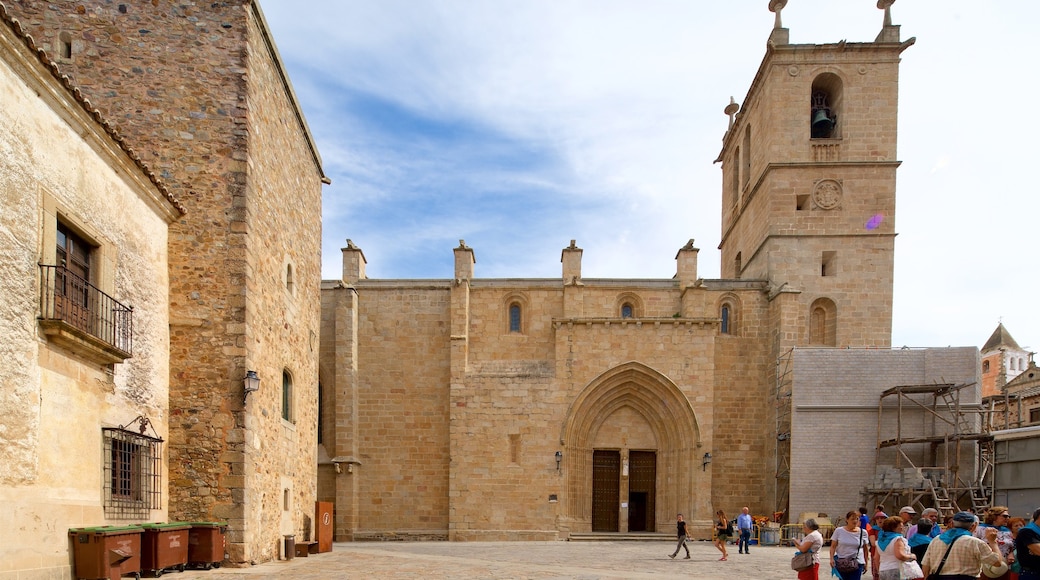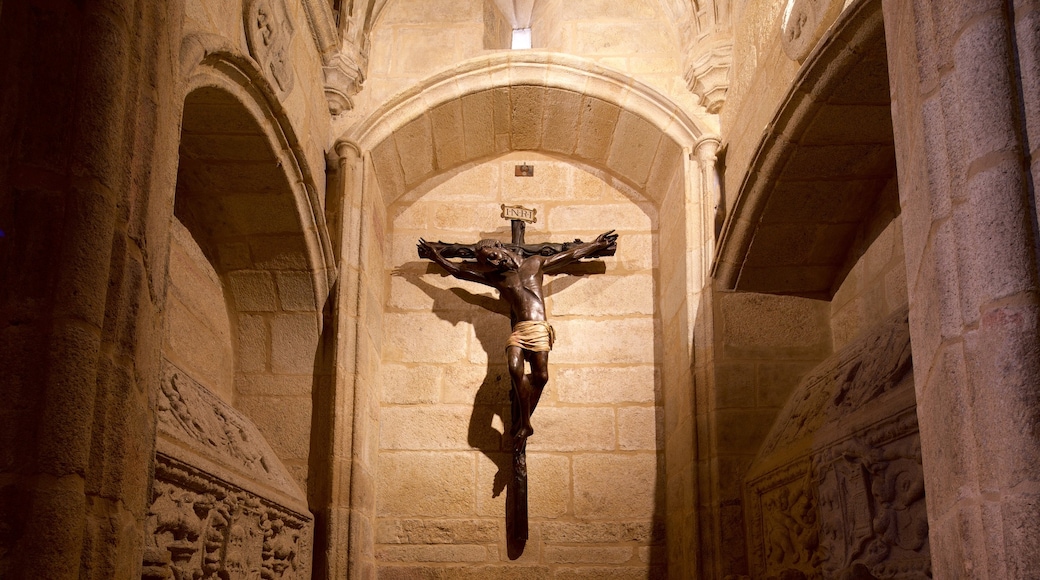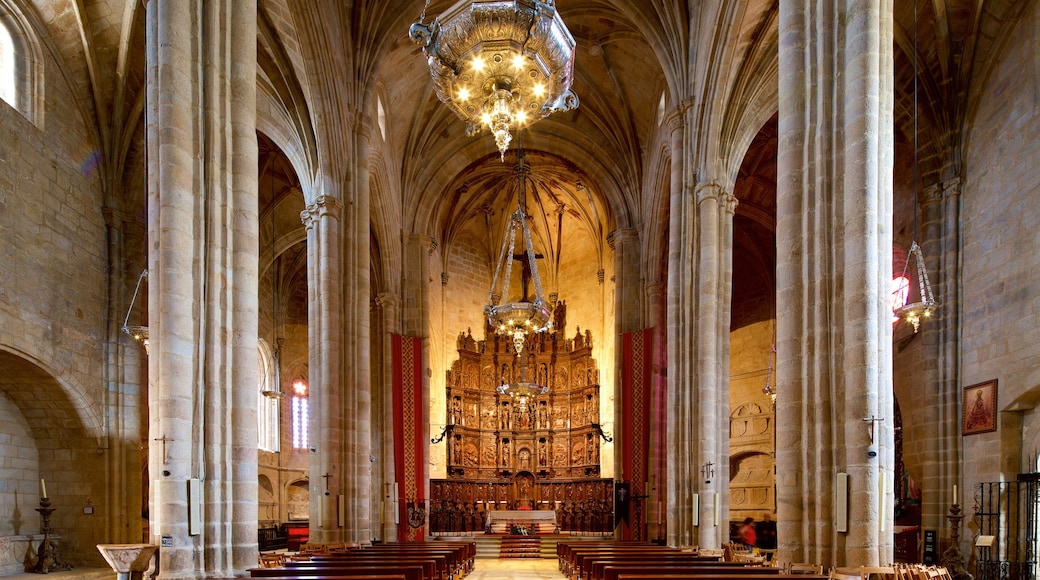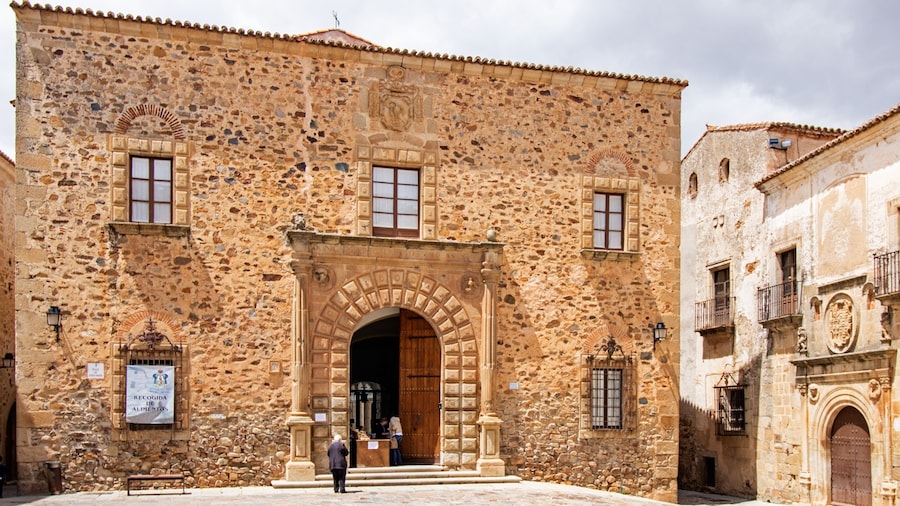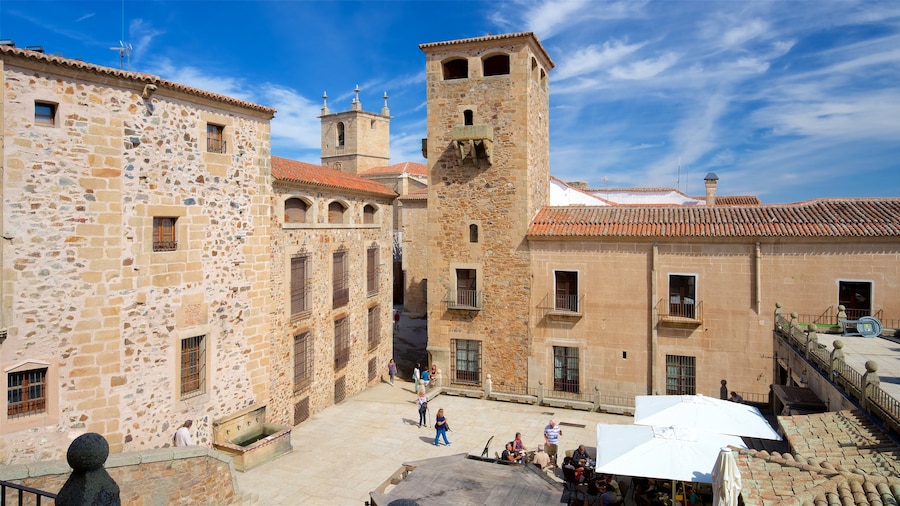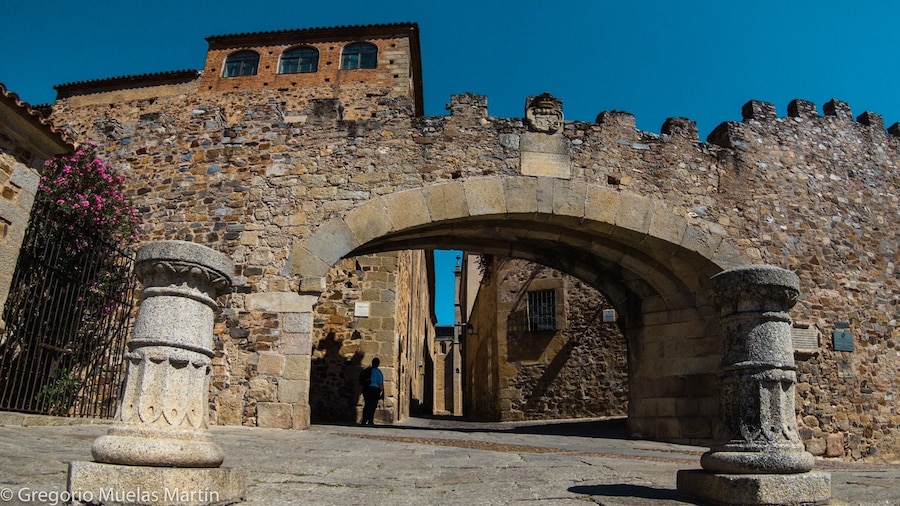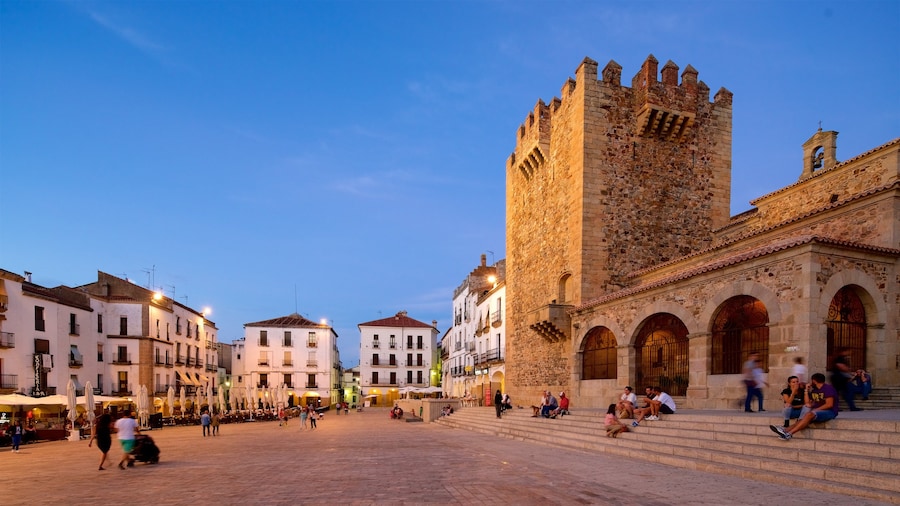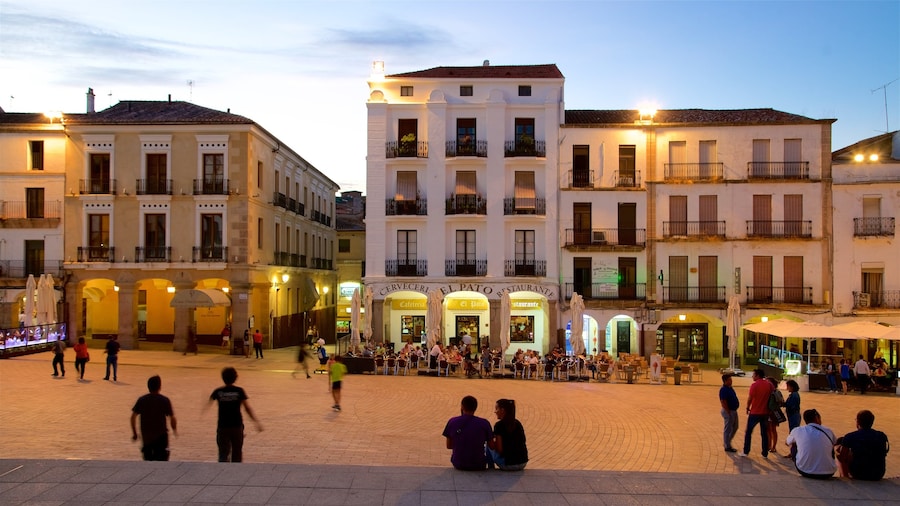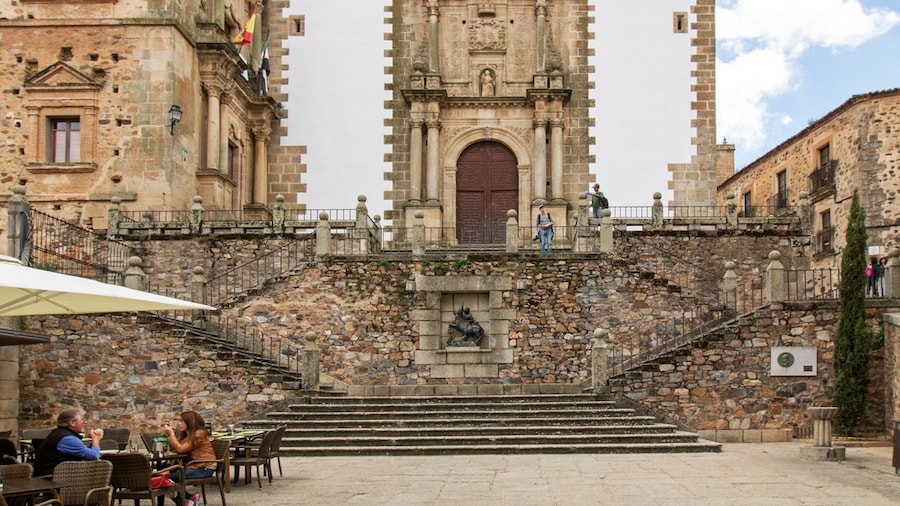See the golden tones of this remarkable Gothic cathedral’s timeworn stonework and explore the interiors to find ancient sepulchers and Romanesque relics.
The Santa María Cathedral is a centuries-old treasure that stands steadfast in the plaza of the same name. Its main structure is a sprawling 15th-century Gothic cathedral with three naves. Admire the beautifully simplistic architecture from the plaza and make your way inside to see the cathedral’s preserved Gothic interiors and Romanesque treasures.
Stand opposite the Santa María Cathedral to inspect its Gothic façade and Romanesque-style main portal. Multihued stone bricks make up the cathedral’s masonry, giving it a mottled and charmingly weathered appearance. Note the tall indented archway of the main portal and the series of small semicircular arches that adorn the top section of the façade. The Gospel section of the façade is the building’s oldest, and is a remnant from the previous Romanesque structure that stood here.
Walk inside the cathedral and take in the tranquil atmosphere. Look up to see the ribbed vaults and beautiful choir stalls. Make your way up the aisle to see the Plateresque altarpiece. The cathedral has a Gothic pulpit and a Plateresque vestry doorway. Through this doorway, you’ll find the Diocesan Museum. Check out a series of Gothic sepulchers and a cherished sculpture of Christ on the cross, which dates back to the Romanesque period.
Other highlights in the cathedral include the 16th-century carved retablo of the Assumption of the Virgin and the San Pedro de Alcantara sculpture. You can also explore the Co-Cathedral Church and adjoining bell tower when visiting Santa María Cathedral.
Santa María Cathedral is located in Plaza de Santa María on the eastern edge of the town’s historic center. It is easy to reach this area on foot from other attractions in the town’s historic center. Check with locals for the times when the cathedral is open to visitors. There is a small admission fee to enter the cathedral. The Co-Cathedral Church and bell tower also have admission fees.
